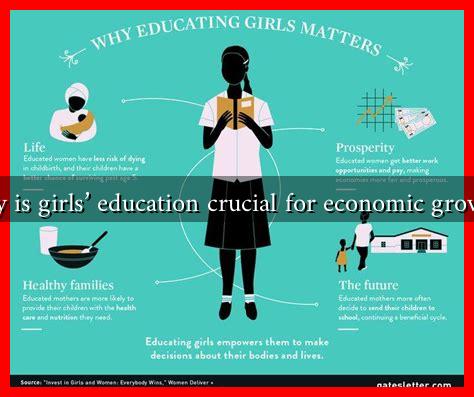-
Table of Contents
Why is Girls’ Education Crucial for Economic Growth?
Education is a fundamental human right and a powerful tool for economic development. Among the various demographics, girls’ education stands out as a critical factor that can significantly influence economic growth. Investing in girls’ education not only empowers women but also leads to broader societal benefits, including improved health, reduced poverty, and enhanced economic productivity. This article explores the multifaceted reasons why girls’ education is essential for economic growth.
The Economic Impact of Educating Girls
Educating girls has a direct correlation with economic growth. When girls receive an education, they are more likely to participate in the workforce, earn higher wages, and contribute to their families and communities. Here are some key economic impacts of girls’ education:
- Increased Labor Force Participation: Educated women are more likely to enter the labor market. According to the World Bank, every additional year of schooling can increase a woman’s earnings by 10-20%.
- Higher Economic Output: A study by McKinsey Global Institute found that closing gender gaps in labor force participation could add $12 trillion to global GDP by 2025.
- Entrepreneurship and Innovation: Educated women are more likely to start their own businesses, fostering innovation and economic diversification.
Breaking the Cycle of Poverty
Education is a powerful tool for breaking the cycle of poverty. When girls are educated, they are more likely to invest in their families’ health and education, creating a positive feedback loop. Here’s how girls’ education contributes to poverty alleviation:
- Improved Family Health: Educated women are more likely to make informed health choices, leading to better health outcomes for their children. For instance, a study by the United Nations Population Fund (UNFPA) found that each additional year of schooling for a mother can reduce child mortality rates by 10-20%.
- Delayed Marriage and Childbearing: Education empowers girls to make informed choices about marriage and family planning, leading to delayed marriages and fewer children. This can significantly reduce the economic burden on families.
- Investment in Future Generations: Educated mothers are more likely to prioritize their children’s education, creating a cycle of education and economic stability.
Case Studies: Success Stories from Around the World
Numerous countries have witnessed the transformative power of girls’ education. Here are a few notable examples:
- Bangladesh: The country has made significant strides in girls’ education through initiatives like the Female Secondary School Stipend Program, which has increased female enrollment in secondary schools. As a result, Bangladesh has seen a rise in women’s participation in the workforce, contributing to economic growth.
- Rwanda: Post-genocide, Rwanda prioritized girls’ education as part of its recovery strategy. Today, women hold a significant percentage of parliamentary seats, and the country has experienced rapid economic growth, partly attributed to the increased participation of educated women in the economy.
- India: Programs like Beti Bachao Beti Padhao (Save the Girl Child, Educate the Girl Child) have aimed to improve girls’ education and reduce gender discrimination. The initiative has led to increased female literacy rates and economic participation.
Challenges to Girls’ Education
Despite the clear benefits, girls’ education faces numerous challenges globally. Some of these include:
- Cultural Barriers: In many societies, traditional norms prioritize boys’ education over girls’, leading to disparities in enrollment and retention.
- Poverty: Families in low-income areas may prioritize immediate economic contributions from boys over long-term investments in girls’ education.
- Safety Concerns: In some regions, girls face threats of violence or harassment while traveling to school, deterring them from pursuing education.
Conclusion: A Call to Action
Investing in girls’ education is not just a moral imperative; it is an economic necessity. The evidence is clear: when girls are educated, they contribute to economic growth, break the cycle of poverty, and foster healthier communities. Governments, NGOs, and private sectors must collaborate to remove barriers to girls’ education and create an environment where every girl can thrive. By prioritizing girls’ education, we can unlock the full potential of half the world’s population and pave the way for sustainable economic growth.
For more information on the importance of girls’ education, visit UNICEF’s Girls’ Education page.

